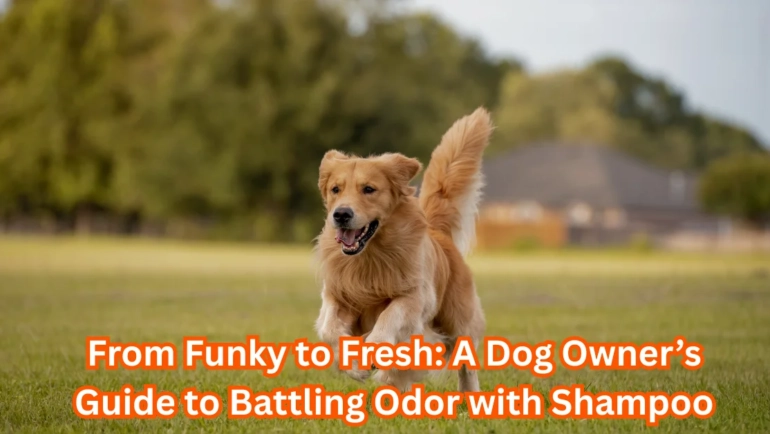22Views 0Comments
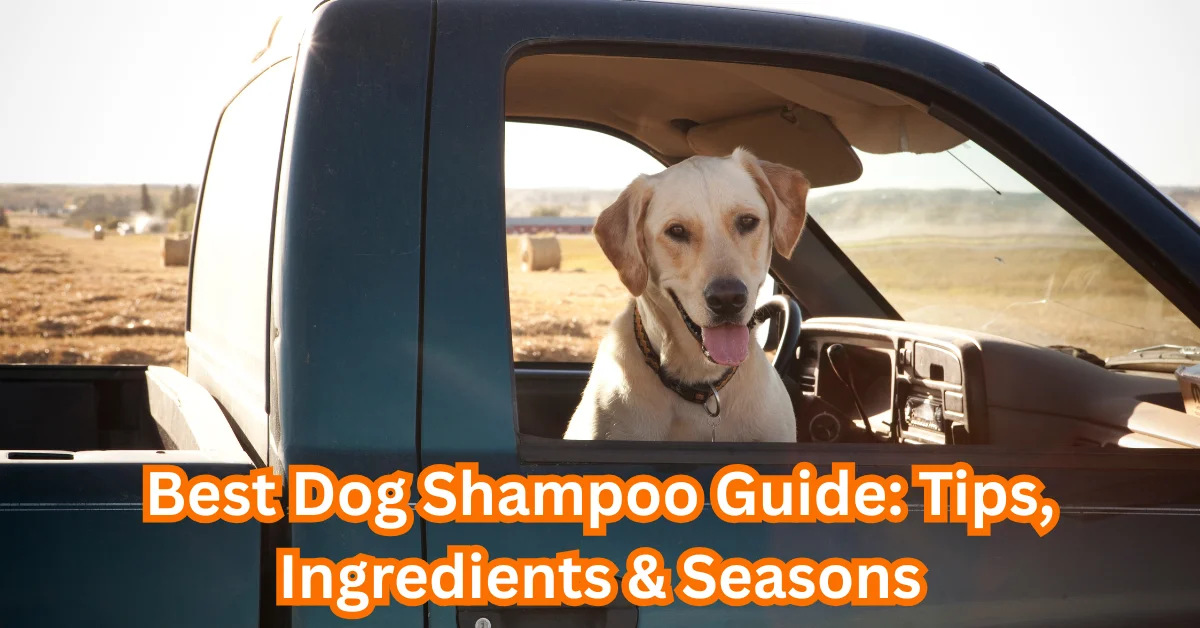
The Ultimate Dog Shampoo Guide: Ingredients, Testing, Bath & Coat Care
In 2022, when Shenee, a long-time university friend, invited me to visit her dog farm, Triple B Farms, in Claude, Texas, I jumped at the chance. I wasn’t just eager to catch up after years apart; I was curious. Working at a dog farm myself in Ozark, Missouri, I thought I already knew the ins and outs of canine care. But as we walked through her rows of happy, tail-wagging residents, I noticed something: each dog had a coat and skin condition that seemed to tell its own story. Shenee explained how she tailored her grooming approach based on each dog’s needs, and that’s when it hit me: understanding a dog’s skin and coat type isn’t just “nice to know,” it’s the foundation for keeping them healthy, comfortable, and looking their best.
That 8-day visit completely reshaped how I choose and use dog shampoo, and in this post, I’m sharing what I learned so you can give your pup the same level of care.
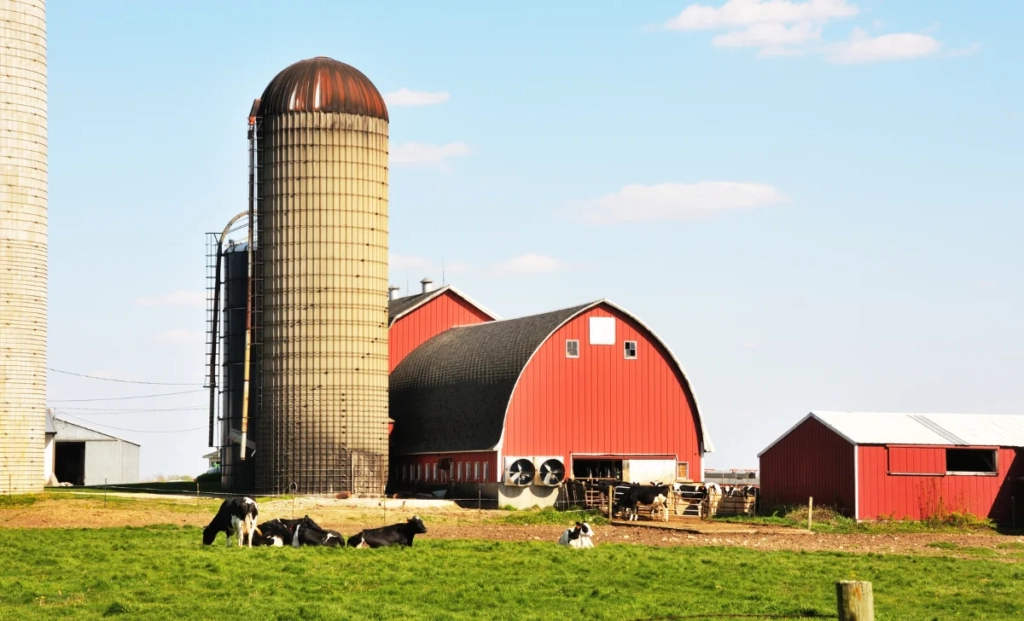
The Warm Welcome and First Impressions
I arrived in Texas ready to explore, and the first thing that struck me about Triple B Farms was the vast, open space. The farm was home to several breeds of dogs, each with their own unique skin and coat types. From sleek short-haired breeds to fluffy, long-coated dogs, there was a lot to observe. Shenee welcomed me with a big smile and immediately gave me a tour of the farm.
We started by meeting a few of her dogs on the first day: a Labrador Retriever with a short, glossy coat, a Poodle with curly, dense fur, and a Rough Collie with a long, luxurious mane. As someone experienced in dog grooming, I could immediately spot the differences in their coat types and textures. This gave me a clear understanding of the different dog coat types that exist, including short, long, curly, wiry, and double coats. Each dog had its own grooming needs and characteristics, which made me realise how important it is to be well-versed in dog skin and coat care.
What Are the Different Dog Coat Types?
A dog’s coat type is simply the texture, length, and structure of its fur, and it plays a big role in how you care for them.
Short Coat
A short coat is smooth, flat, and easy to maintain. Breeds like the Labrador Retriever shed moderately but don’t need heavy grooming. A quick brush a few times a week keeps the coat shiny and the skin healthy.
Long Coat
A long coat is flowing, silky, and beautiful, but it needs daily care. The Rough Collie’s mane, for example, can tangle and mat easily if not brushed often. Long coats also dry slowly, so keeping the skin from becoming irritated takes extra attention.
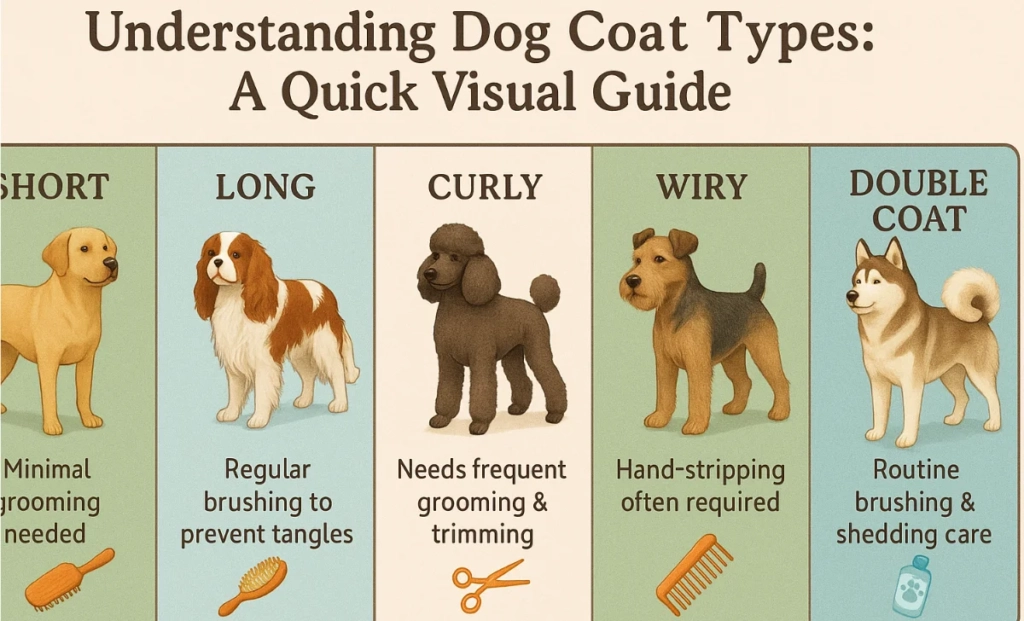
Curly Coat
A curly coat, like the Poodle’s, is dense and springy. It traps dirt and mats quickly without regular brushing. These coats can also be sensitive to weather changes, which sometimes makes the skin itchy or dry.
Wiry Coat
Wiry coats are coarse and bristly to the touch. While I didn’t see one at Triple B Farms, I’ve worked with Schnauzers before. Their coats need hand-stripping, a special grooming method. to keep their texture and prevent skin issues.
Double Coat
A double coat has two layers: a soft undercoat for warmth and a coarser topcoat for protection. Huskies and Border Collies have them. They shed heavily during seasonal changes, so brushing is essential to keep the coat healthy and prevent pests from hiding in the fur.
What Is the Normal Appearance of a Dog’s Skin and Coat?
A healthy dog’s skin is smooth, soft, and free from redness, flakes, or bald spots. Their coat should look shiny, feel full, and move easily when you run your hand through it. There shouldn’t be tangles, excessive shedding, or dullness.
In the evening, when I spent time with the dogs at the Farms, every coat told the story of good care. From the Labrador’s glossy shine to the Collie’s silky waves, their fur looked alive. It reminded me how much regular grooming and the right shampoo matter. Without it, even a happy, well-fed dog can develop dryness, itchiness, or irritation, especially breeds with long or curly coats.
Learning About Common Skin Problems and Their Solutions
The most common dog skin problems are dryness, redness, and excessive shedding. Each has its own causes and solutions, and many are linked to coat type and grooming habits.
On my second day at Triple B Farms, I noticed a small group of dogs with visible skin troubles. Some had flaky patches, while others were scratching more than usual. It instantly reminded me of my time at the dog farm in Ozark, where I saw the same issues pop up again and again.
Dry Patches
Dry skin feels rough to the touch and can leave flakes in the fur. Long and curly-coated breeds are more prone because their fur traps moisture and dirt. Even dogs with smooth coats, like Labradors, can develop dryness in cold, dry weather. Regular brushing and moisturising shampoos help keep the skin comfortable.
Red or Inflamed Skin
Redness is often the body’s way of showing an allergic reaction. It can come from shampoo ingredients, food sensitivities, or even contact with certain grasses. When I spot redness, I always think about what the dog has eaten, where they’ve been, and which products were used during grooming.
Excessive Shedding
Some shedding is natural, but heavy, sudden shedding can signal trouble. Skin infections, stress, or sensitivity to a new product may cause it. Watching a dog’s shedding pattern closely can help catch problems early, before they turn into bigger issues.
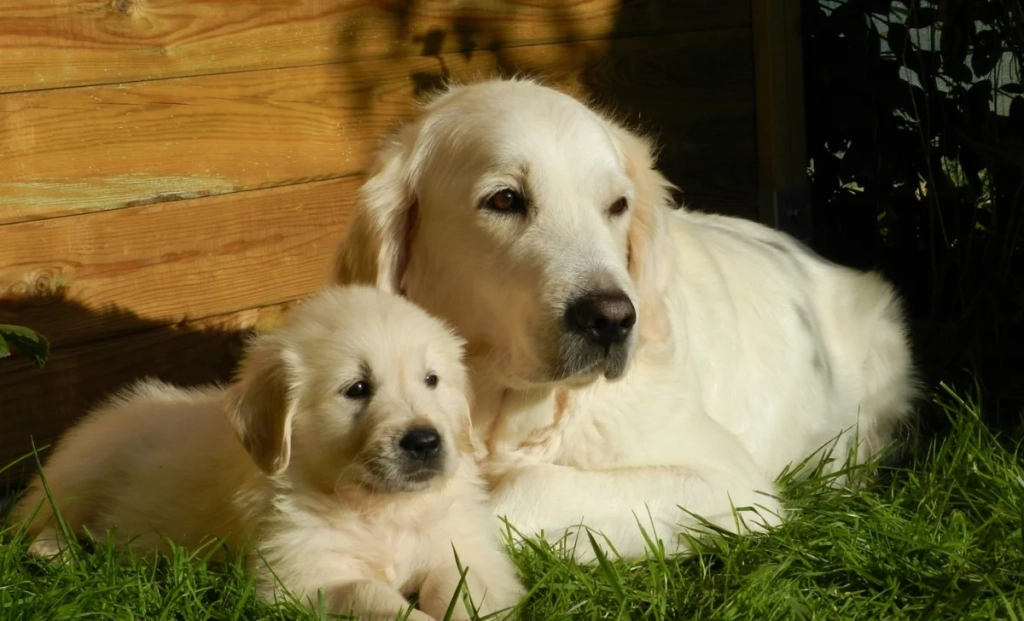
How to Keep Your Dog’s Skin and Coat Healthy?
The best way to keep your dog’s skin and coat healthy is through regular grooming, a balanced diet with omega fatty acids, and early detection of any skin problems. These habits prevent dryness, reduce shedding, and keep your dog comfortable year-round.
During my visit to Triple B Farms, I saw how Shenee put these steps into action every day. Her dogs not only looked great, but they were relaxed, happy, and itch-free. It inspired me to bring some of her methods back home.
Regular Grooming
Short-haired dogs do well with a weekly brush to remove loose fur and keep the skin breathing. Long-haired or curly-coated breeds need daily brushing to prevent mats, tangles, and trapped dirt. Grooming also gives you a chance to bond with your dog while checking for any hidden issues.
Omega Fatty Acids
Healthy fats are just as important for dogs as they are for us. Shenee adds a small amount of fish oil to her dogs’ meals to boost coat shine, reduce shedding, and support skin health. It’s a simple addition that makes a big difference.
Early Skin Checks
Catching problems early can save your dog from discomfort. Look for redness, flakes, bald patches, or unusual scratching. If something doesn’t seem right, adjust grooming products or visit a vet before the issue gets worse.
Grooming Tips for Different Dog Coat Types
Different coat types need different grooming to stay healthy and comfortable. Shenee showed me how she tailors her routine to each dog’s unique fur, and it opened my eyes to the details that make a difference.
Short Coat – For dogs with short fur, like Labradors, brushing once a week usually does the trick. It helps remove loose hair and keeps their skin healthy. Regular baths are still important to wash away dirt and natural oils that build up over time.
Long Coat – Long-haired dogs, such as the Rough Collie, need more frequent care. Daily brushing prevents tangles and mats that can irritate the skin. Trimming is also essential to keep their coat manageable and to avoid painful hot spots caused by trapped moisture or debris.
Curly Coat – Curly coats, like those on Poodles, require consistent grooming to stay tangle-free. Without regular brushing and trims, their dense curls can mat quickly, which leads to discomfort and skin problems. Keeping the coat trimmed helps maintain its bounce and shine.
A Deep Dive into Dog Shampoo Ingredients
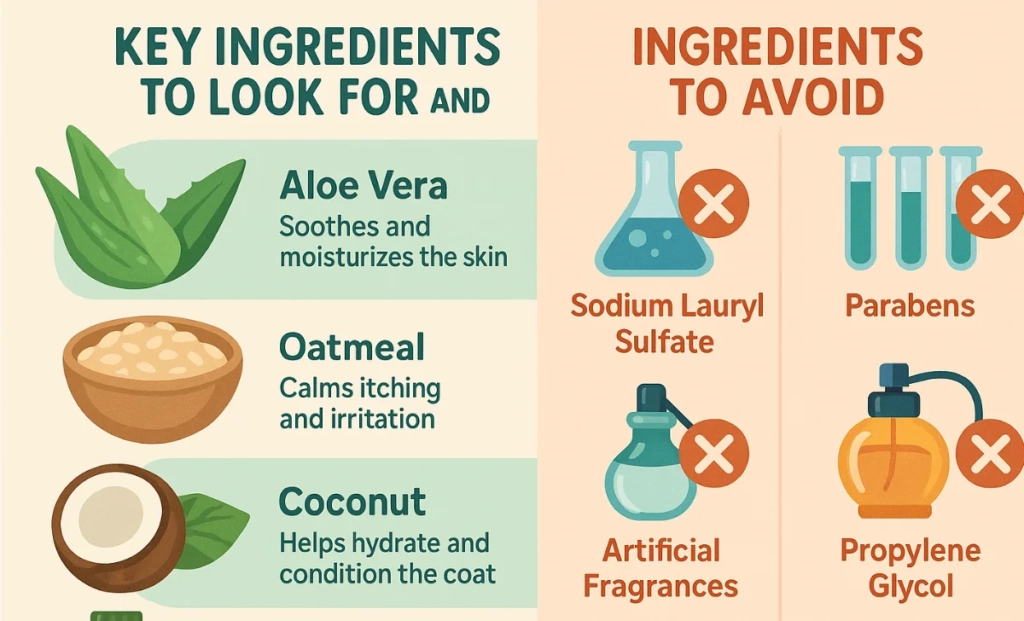
By Day 3, I had settled into the rhythm of this farm life. The dogs had become my companions, and I started to pay closer attention to their health and grooming needs. I was now starting to get a real feel for Shenee’s approach to dog care, and that day, we spent quite a bit of time discussing something near and dear to my heart: “dog shampoo”
Shenee had noticed that one of her dogs, a Golden Retriever, had been scratching excessively after his bath. It reminded me of similar situations back at the dog farm in Ozark. After some investigation, we realised that the dog’s itching was likely due to the shampoo she was using. This sparked a deeper conversation about key ingredients in dog shampoo and how essential it is to choose the right products.
What Ingredients to Look For in Dog Shampoo?
The best dog shampoos have gentle, natural ingredients that soothe skin and keep coats healthy. During my walk around the farms, Shenee shared her favourite ingredients, many of which I’ve seen work wonders for dogs with sensitive or irritated skin.
Aloe Vera is a top choice because it calms itching and reduces inflammation. Its moisturising power helps dogs with irritated skin feel comfortable again. Oatmeal is another superstar ingredient, especially for pups with dry or sensitive skin. It restores moisture and eases that itchy, scratchy feeling.
Tea tree oil can fight bacteria and fungus, but it needs to be used carefully since some dogs are sensitive to it. Coconut oil is a natural moisturiser with antibacterial properties and a scent that dogs seem to love.
Seeing these ingredients in action at the farm made me appreciate how much a shampoo’s formula matters. After all, a well-chosen shampoo isn’t just about cleanliness, it’s about comfort, health, and happy skin.
Read here our ultimate dog shampoo ingredients explanation.
What Are the Main Ingredients to Avoid in Shampoo?
Harsh chemicals like sodium lauryl sulfate, parabens, artificial fragrances, and propylene glycol can cause dryness, irritation, or allergic reactions in dogs. I had to ask Shenee if she’d ever had a problem with any particular ingredients in shampoos. She admitted that she once used a shampoo that left her dog’s skin dry and irritated because of certain harsh chemicals, which made me realise how important it is to read labels carefully.
Sodium lauryl sulfate (SLS) is often added to shampoos to create foam, but it strips away the skin’s natural oils, leaving coats dry and skin sensitive. Parabens, used to preserve products, have been linked to skin irritation and can even disrupt hormones over time.
Artificial fragrances sound nice, but they can trigger allergies and itching, especially in dogs with sensitive skin. It’s better to choose shampoos scented naturally, using gentle essential oils. Propylene glycol is meant to moisturise, but it can backfire by irritating dogs prone to allergies.
From what I’ve seen, avoiding these ingredients makes a big difference in keeping a dog’s skin calm and their coat healthy.
How to Test Dog Shampoo?
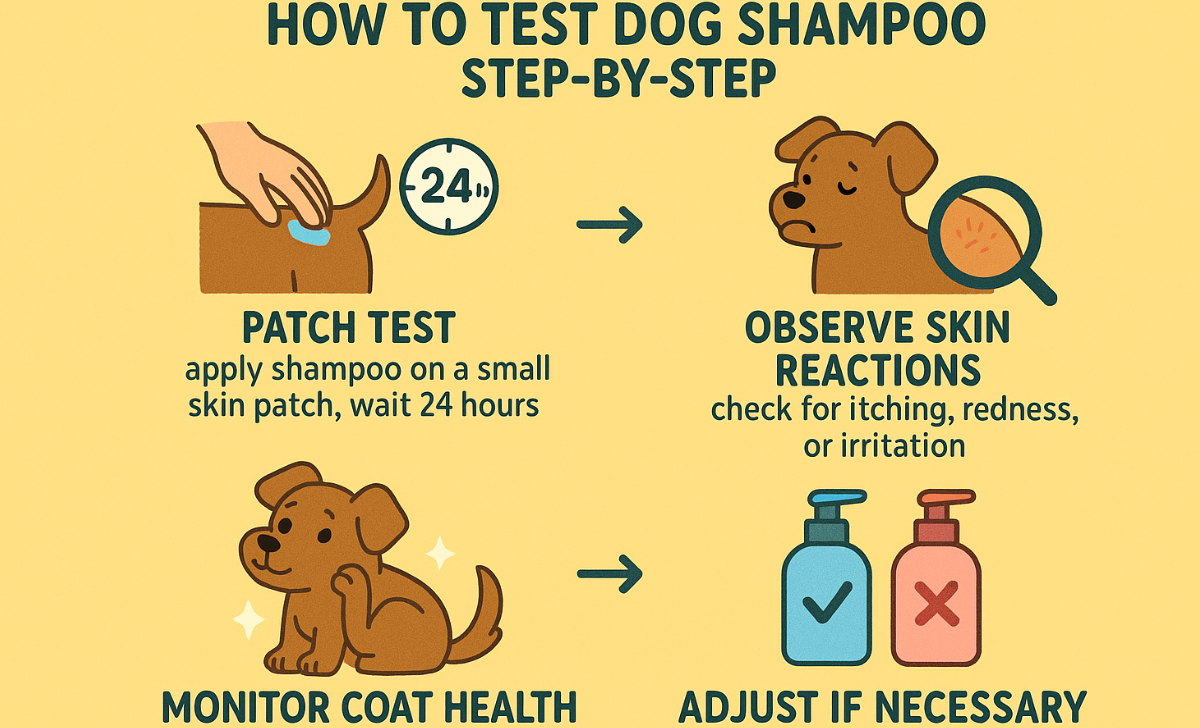
The best way to test if a dog shampoo works is to start small, watch for reactions, and see how the coat responds over time. As we chatted more, Shenee asked a great question: “How can you test if a dog shampoo is working?” Having faced this same challenge at my farm, I shared a few tips that have helped me make sure I’m using the right shampoo for each dog:.
First, do a patch test by applying a little shampoo on a small area of your dog’s skin. Wait 24 hours and check for any redness or irritation. If the skin looks good, it’s usually safe to proceed with a full bath.
After the bath, watch your dog closely. If they start scratching a lot, or if you see redness or flaking, the shampoo might not be the right fit.
Finally, keep an eye on how the coat looks and feels in the days after washing. A good shampoo leaves fur soft, shiny, and healthy, not dry or brittle.
What Ingredients in Shampoo Can Cause Itching?
Sulfates, alcohol, artificial fragrances, and dyes are some of the main shampoo ingredients that can cause itching in dogs. When Shenee’s Golden Retriever started scratching after a bath, she traced it back to a shampoo containing sulfates, these chemicals dry out the skin by stripping away natural oils.
Alcohol in shampoos also dries the skin and can lead to irritation and itching. Artificial fragrances may smell nice to us, but they often trigger allergic reactions in dogs, especially those with sensitive skin.
Dyes and colourants aren’t just unnecessary; they can cause redness, itching, or even more serious skin problems.
Knowing what to avoid helps keep your dog comfortable and itch-free after every bath.
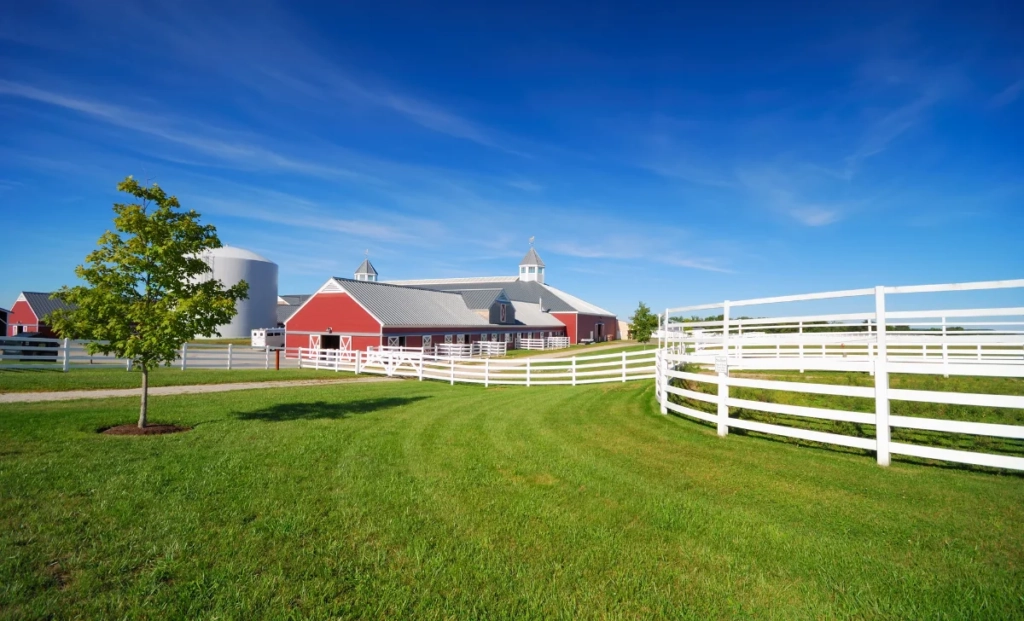
What Is 3-Ingredient Homemade Shampoos?
On Day 4, Shenee and I decided to try a 3-ingredient homemade shampoo recipe for her dog that had been itching. It was a simple, natural solution that I’ve used before with great success. Here’s the recipe:
Ingredients:
- Oatmeal (1/2 cup): Known for its soothing properties, it can help alleviate dry skin.
- Coconut Oil (2 tablespoons): Moisturises and hydrates the skin.
- Aloe Vera Gel (2 tablespoons): Soothes and cools the skin.
Instructions:
- Blend all ingredients into a paste.
- Apply to your dog’s wet coat, massaging gently.
- Leave it on for 5-10 minutes, then rinse thoroughly.
This recipe worked wonders for the dog’s irritated skin, leaving him calm and relaxed. I’ve always been a fan of homemade, all-natural remedies, and seeing it work in action reminded me of the power of simple ingredients when it comes to dog grooming.
The Medicated Shampoo Dilemma
By Day 5 at Triple B Farms, I had gotten into a routine with the dogs. The morning started with me helping Shenee care for some of the dogs that had skin issues, which brought up the topic of medicated vs. regular dog shampoo. Shenee had a couple of dogs that had been dealing with dry, flaky skin, and one of them, a sweet Beagle, had developed some hot spots from excessive scratching.
She asked me about medicated shampoo and whether it was necessary. Having worked in dog care for so long, I knew the answer wasn’t always clear-cut, so we spent some time discussing when and how to use it properly.
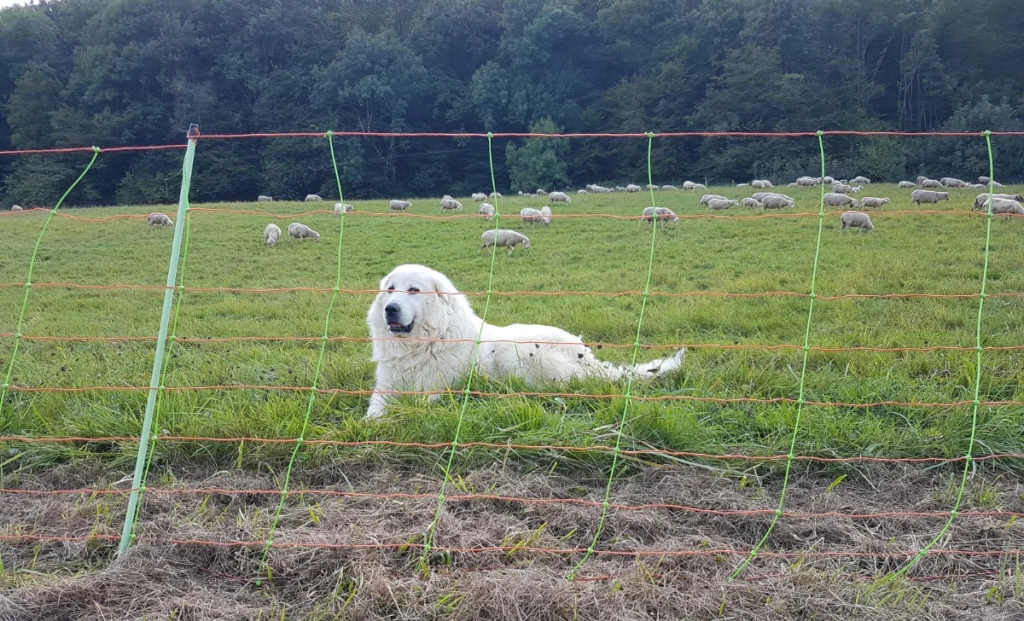
Should You Use Medicated Shampoo Before or After Regular Shampoo in Dogs?
Medicated shampoo should be used before regular shampoo to get the best results. Shenee was curious about this order, and I explained that medicated shampoos contain active ingredients designed to treat specific skin problems like infections or dryness. If you wash with regular shampoo first, it can wash away those important ingredients and make the treatment less effective.
Typically, you apply medicated shampoo first, letting it sit for a few minutes so it can penetrate the skin and work on the problem. After rinsing, you follow up with a regular shampoo to gently cleanse and remove any leftover residue. This leaves the coat soft and smelling fresh without irritating the skin.
We put this method to the test with a Beagle at the farm. We used the medicated shampoo first, letting it work for a few minutes before applying a gentle regular shampoo. I watched carefully to make sure the Beagle stayed comfortable and didn’t develop any new irritation.
Does My Dog Need Medicated Shampoo?
Your dog needs medicated shampoo if they have persistent itching, skin infections, hot spots, flaky skin, or unusual odours. At the dog farm in Ozark, I often saw dogs with irritated skin, and deciding to use medicated shampoo usually depends on these symptoms.
Shenee’s Beagle had chronic itching and a stubborn hot spot that didn’t heal with regular grooming. In cases like this, medicated shampoos with ingredients like chlorhexidine or miconazole can make a big difference.
If you notice your dog scratching more than usual or see infections, scaly patches, or strange smells, it’s a good idea to check with your vet. They can recommend whether medicated shampoo is right, and may even prescribe one tailored to your dog’s needs.
How Often Should You Use Medicated Shampoo on a Dog?
The frequency of medicated shampoo depends on the skin condition’s severity. Shenee and I talked about this, and I explained that for chronic skin issues, medicated shampoo is typically used once or twice a week until the problem improves. After that, switching back to a gentle regular shampoo helps maintain the dog’s skin health.
For sudden problems like hot spots or fungal infections, vets often recommend daily use for a short period. However, using medicated shampoo too much can dry out or irritate the skin. We agreed that after a few washes, Shenee should closely watch the Beagle’s skin and decide when it’s time to return to regular shampoo.
What Are the Disadvantages of Medicated Shampoo?
Medicated shampoos can cause dryness, irritation, and may not suit all dogs’ skin types if overused. I’ve always been cautious with these shampoos because while they treat specific skin issues well, using them too often or incorrectly can do more harm than good.
Some medicated shampoos contain strong ingredients that dry out the skin if used too frequently. Dogs with sensitive skin might develop irritation or allergic reactions to these products. Plus, just like antibiotics, overusing medicated shampoos can lead to resistance, making them less effective over time.
Because of this, I advised Shenee to use the medicated shampoo for her Beagle only when necessary and to monitor the dog’s skin closely.
What Happens If I Use Regular Shampoo on a Dog?
Using regular shampoo, especially that meant for humans, on dogs can cause dryness, irritation, and skin problems. Shenee once tried using a human shampoo on her dog, thinking it would be okay. But dogs’ skin is thinner and more sensitive than ours, so human shampoos often strip away their natural oils.
This can leave their skin dry and itchy, cause dandruff or flakes, and trigger allergies like redness or swelling. While occasionally using a mild, unscented, hypoallergenic human shampoo might not cause serious harm, it’s always safer to use shampoos made specifically for dogs. These products keep their skin balanced and comfortable.

Can We Use Regular Shampoo for Dogs?
Using regular shampoo on dogs isn’t ideal, but a small amount in an emergency can be okay. Shenee asked me this question, and I explained that if you run out of dog shampoo and need to clean your dog quickly, a mild regular shampoo might work once.
That said, it shouldn’t become a habit. Regular shampoos aren’t formulated for a dog’s sensitive skin and can cause dryness or irritation over time.
The best choice is to invest in a shampoo made specifically for dogs. This keeps their skin moisturised, their coat healthy, and helps prevent uncomfortable skin problems.
See our best regular dog shampoo detailed review
Understanding Seasonal Dog Shampoo Needs
By Day 5 at that farm, I was really getting a part of that farm, but more importantly, I was learning so much about the seasonal needs of dog shampoos. One particular dog, a Golden Retriever, was experiencing a shift in her coat. It was fall, and the weather was cooling down, which meant she was shedding more than usual. This seasonal shedding was a perfect example of why seasonal or occasional dog shampoo needs should be considered for optimal skin and coat care.
Shenee was telling me how she had noticed her dogs shedding heavily with the change of seasons, and she asked me for advice on how to handle the extra grooming demands. I’ve experienced similar seasonal challenges at my farm in Ozark, Missouri, so this was a perfect opportunity to dive deeper into the subject.
Seasonal Changes and Dog Shampoo
Fall and spring are the seasons when dogs shed the most. This happens because their bodies react to changes in temperature, affecting how their undercoats grow and shed. Dogs with double coats, like Golden Retrievers, feel this especially.
As fall arrives and the air cools, these dogs grow a thicker, denser coat to keep warm. When warmer months come, they shed that undercoat to make room for a lighter coat that helps them stay cool. This natural cycle produces a lot of loose hair, which, if not managed, can lead to mats, skin irritation, or other problems.
When I visited Shenee’s farm, her Golden Retriever was shedding heavily that morning. We talked about the best way to handle seasonal shedding through grooming. I recommended using shampoos made specifically for shedding periods. These shampoos often contain natural oils and moisturising agents that help loosen and remove dead hair from the coat while keeping the skin healthy and hydrated.
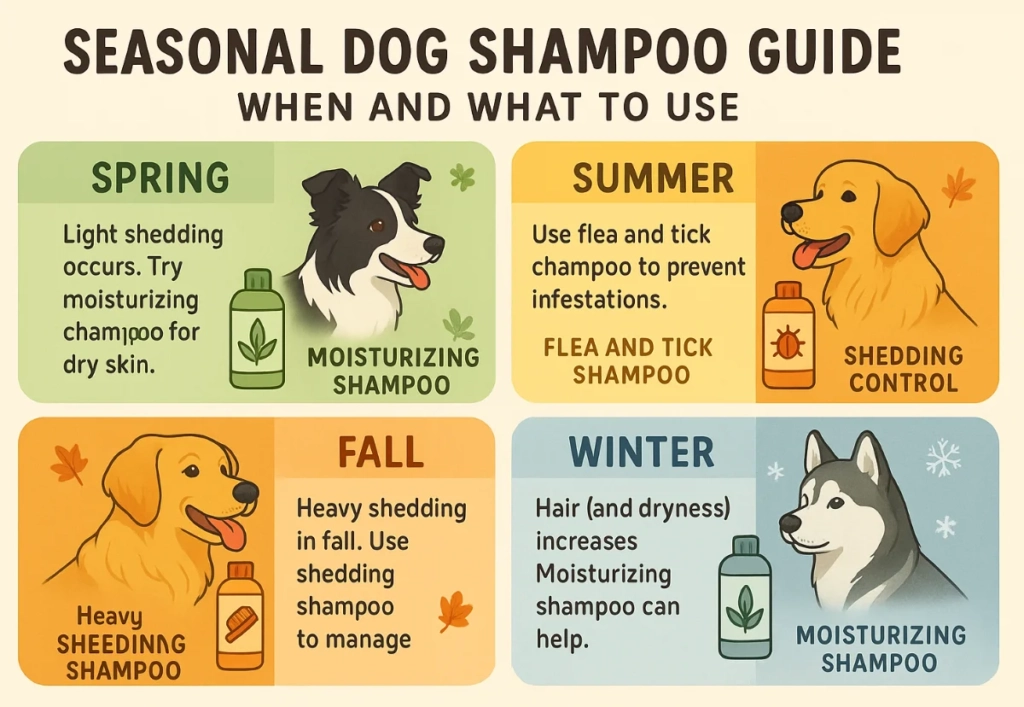
Seasonal or Occasional Dog Shampoo Needs
During shedding seasons, shampoos with ingredients like Omega-3 fatty acids and coconut oil can reduce excess shedding and improve coat health. Fall and winter bring drier air, so moisturising shampoos with oatmeal or aloe vera help protect the skin from drying out and flaking.
Spring and summer mean another concern: fleas and ticks. Flea and tick shampoos become important in warmer months, especially for farms like Shenee’s in rural Texas, where these pests are common. We made sure to stock up on these shampoos to keep the dogs protected during those times.
How Often Should You Use Seasonal Shampoos?
It really depends on your dog’s skin and coat. For dogs that shed a lot, like Shenee’s Golden Retriever, using a shedding shampoo about once a week during heavy shedding periods works well. If your dog’s skin gets dry in the colder months, a moisturising shampoo every two weeks can help keep their skin soft and healthy.
Flea and tick shampoos should be used as needed, following the instructions on the label, especially in warmer months when pests are more active.
Shenee appreciated this advice, and together we created a grooming schedule to keep her dogs comfortable and their coats in great shape all year round.
Tackling Occasional Shampoo Needs
Day 6 was a great continuation of what we had learned about seasonal shampoo needs, but it was also a time to discuss occasional dog shampoo needs. Shenee mentioned a dog on the farm, a Shih Tzu, who had developed an unusual skin irritation. This was an excellent example of how occasional dog shampoo needs can arise due to something specific, such as allergies, skin infections, or even unusual outdoor conditions like dirt, mud, or chemicals.

What Are Occasional Dog Shampoo Needs?
Occasional dog shampoo needs arise when a dog faces a specific issue that isn’t part of their regular grooming routine. I explained this to Shenee as situations that require special shampoos tailored to unexpected problems or events.
Allergies or Skin Sensitivities
Sometimes dogs develop allergies from food, seasonal allergens like pollen or dust, or even contact with chemicals or plants outside. When this happens, red, itchy patches or rashes can appear. In these cases, anti-itch or hypoallergenic shampoos work best because they calm irritated skin and reduce inflammation.
Skin Infections
Dogs can develop bacterial or fungal skin infections from environmental exposure. Medicated shampoos with ingredients like chlorhexidine or miconazole are often prescribed by vets to treat these infections. From my experience, using these shampoos early can make a huge difference in healing and comfort.
Dirty or Muddy Coats
One day, Shenee’s Shih Tzu had rolled in the mud, leaving its coat oily and grimy. Regular grooming just wasn’t enough. That’s when a deep-cleansing shampoo is necessary; these are specially formulated to break down oils and dirt for dogs who love outdoor play or tend to get messy.
Can Regular Shampoo Be Used for Occasional Needs?
Regular dog shampoo can be used for general cleaning, but it’s often not enough for specific problems. On Day 6, Shenee asked me about this. I explained that occasional needs like allergies or infections usually require special shampoos with targeted formulas, such as anti-itch, deep cleansing, or medicated types, that actually address the root cause.
For example, if a dog has an allergic rash, a regular shampoo won’t soothe the skin. Instead, hypoallergenic shampoos with oatmeal or aloe vera are designed to calm irritation and hydrate the skin during allergic reactions.
When Should You Use Medicated Shampoo for Occasional Needs?
Medicated shampoo may be needed temporarily to treat skin infections or fungal issues. But, as I’ve said before, overusing medicated shampoos can dry out your dog’s skin. They should only be used when necessary, usually for a few washes until the condition improves.
What Happens if I Use Regular Shampoo for Occasional Issues?
Using regular shampoo for allergies or infections may not fix the problem and could make it worse. Regular shampoos can irritate sensitive or dry skin, especially if the dog is already uncomfortable. When dealing with specific skin conditions, it’s best to stick to specialised shampoos made for those issues.
Exploring DIY Dog Shampoo Options
By Day 7 at Triple B Farms, I had really grown fond of the routines and the challenges that come with caring for the dogs. That morning, Shenee and I spent some time in the grooming area with her Schnauzer, who had developed a slight rash on his belly. While talking about the best ways to treat his skin, Shenee asked me a great question: “Can I make my own dog shampoo?”
This is a question I’ve encountered before, both at my farm and in casual dog care discussions. People are often drawn to DIY dog shampoos because they feel more natural and customizable to their dog’s needs. After all, many store-bought shampoos can have chemicals or ingredients that might not agree with every dog. So, I shared my thoughts with Shenee about DIY vs. store-bought dog shampoos, drawing on my experience in both areas.
Can I Make My Own Dog Shampoo?
Yes, you absolutely can make your own dog shampoo! It’s a great way to avoid harsh chemicals and tailor the ingredients to your dog’s skin and coat needs. I shared some simple DIY recipes with Shenee that are gentle and effective, as long as you know what to use and what to avoid.
Basic Oatmeal Dog Shampoo Recipe
Ingredients:
- 1 cup oatmeal (finely ground)
- 1/4 cup baking soda
- 1/2 cup warm water
Instructions:
- Grind the oatmeal into a fine powder using a blender or food processor.
- Mix the oatmeal powder with baking soda and warm water until it forms a paste.
- Apply the mixture gently to your dog’s coat, massaging it in.
- Rinse thoroughly with warm water.
This oatmeal shampoo is especially good for dogs with dry, itchy skin. The oatmeal helps soothe and moisturize, while the baking soda cleans the coat and neutralises odours.
What’s the Best Substitute for Dog Shampoo?
When Shenee’s Schnauzer had a mild rash, we looked for a gentle alternative. Unscented baby shampoo can be a good substitute if you don’t have dog shampoo on hand. It’s not perfect for regular use, but in emergencies, it’s a safer option. Just make sure it doesn’t contain fragrances, dyes, or harsh chemicals that could irritate your dog’s skin.
I also mentioned Castile soap as another effective substitute. It’s plant-based and free from harsh chemicals, making it gentle on sensitive skin. Plus, it doesn’t strip away natural oils, which helps keep your dog’s skin healthy.
Do I Need to Buy Dog Shampoo?
Shenee wondered if she really needed to buy dog shampoo or if DIY versions would always work. I explained that while homemade shampoos are great for occasional use, regular grooming calls for a store-bought dog shampoo. These products are formulated to match a dog’s unique skin pH, which is different from humans and is more neutral.
For everyday grooming, it’s best to invest in a shampoo made with safe, high-quality ingredients. Dog shampoos clean thoroughly without drying out or irritating the skin, which is why I always keep a reliable supply on my farm.
What Is the Best Natural Dog Shampoo?
The best natural dog shampoo is one that soothes your dog’s skin while avoiding harsh chemicals. When Shenee asked about natural options, I recommended shampoos with gentle, skin-friendly ingredients that are perfect for sensitive dogs.
One I often suggest is Vet’s Best Allergy Itch Relief Shampoo. It contains aloe vera, chamomile, and vitamin E, all known for calming itchy, irritated skin, ideal for dogs with allergies or dryness.
Another favourite is Earthbath Oatmeal & Aloe Shampoo. Its oatmeal and aloe formula helps relieve itching and irritation while moisturising, making it perfect for sensitive skin.
I also mentioned Burt’s Bees for Dogs, which uses natural ingredients like honey, beeswax, and vitamin E. It’s gentle enough for regular use and keeps the coat healthy without causing irritation.
These natural shampoos are effective and safe, making them great choices for keeping your dog’s skin and coat in top shape.
How to Wash a Dog if I Don’t Have Dog Shampoo?
Quick Cleaning with a Damp Cloth or Sponge
If you don’t have dog shampoo, you can still keep your dog clean with just a damp cloth or sponge. This works especially well when your dog isn’t too dirty and just needs a quick wipe-down. Warm water helps loosen dirt and dust from their fur, and gently rubbing with a cloth can freshen them up without a full bath. I often use this method when time is short or during colder months when frequent baths aren’t ideal.
What You Should Know Before Bathing Your Puppy In 2025
Using Dry Shampoo or Cornstarch as a Substitute
Dry shampoo made specifically for dogs is a great alternative when you want to avoid water or can’t do a full bath. It absorbs excess oils and neutralises odours, leaving your dog’s coat looking fresh. If you don’t have commercial dry shampoo on hand, cornstarch works surprisingly well. Just sprinkle it lightly on your dog’s coat, rub it in gently to absorb oils, and then brush it out thoroughly. This simple hack is something I’ve used myself when out on the farm and in a pinch.
DIY Apple Cider Vinegar Rinse for Odour and Detangling
In an emergency, a homemade rinse of apple cider vinegar mixed with water in equal parts can help clean your dog’s coat. This rinse is excellent for removing odours, detangling fur, and balancing the skin’s pH, which is important for healthy skin. Just be cautious to avoid your dog’s eyes when applying it. I shared this tip with Shenee after noticing some dogs had a slight odour but didn’t need a full wash. It’s a gentle, natural alternative that works surprisingly well.
What to Look for When Buying Dog Shampoo?
Choose Natural, Gentle Ingredients
When shopping for dog shampoo, the ingredients list should be your first checkpoint. Natural components like oatmeal, aloe vera, and coconut oil are fantastic because they soothe the skin and keep it moisturised. Harsh chemicals, synthetic fragrances, and artificial dyes can irritate a dog’s sensitive skin, so it’s best to avoid shampoos that contain those. I always look for gentle formulas that nourish rather than strip away natural oils.
Match Shampoo to Your Dog’s Skin Type
Different dogs have different skin needs. If your dog has sensitive skin, hypoallergenic shampoos are usually the safest bet. Dogs with oily skin might benefit from a shampoo that controls excess oils, while those with dry or flaky skin need moisturising formulas. I often remind Shenee that understanding your dog’s skin type is key to choosing the right product, as the wrong shampoo can make problems worse.
Pick a Shampoo That Addresses Specific Needs
Some dogs have special requirements. Allergies, dry skin, flea infestations, or recurring infections call for shampoos formulated to target these issues. For example, anti-itch shampoos can calm irritated skin, while flea and tick shampoos help protect against pests during warmer months. Shenee found it helpful to have different shampoos on hand depending on the season and her dogs’ health.
Trust Reputable Brands for Quality and Safety
Finally, buying from reputable brands gives you peace of mind. Brands like Earthbath, Vet’s Best, and Burt’s Bees are well-known for their commitment to quality, natural ingredients, and safety. These shampoos often undergo more rigorous testing and are formulated specifically for canine skin, which differs significantly from human skin. I’ve personally used all of these and recommend them to Shenee because they balance effectiveness with gentleness.
What Is the Best Over-the-Counter Dog Shampoo?
The next day, Shenee asked about the best over-the-counter dog shampoo for her dogs. I gave her a few of my top recommendations based on my own experiences:
Earthbath Oatmeal & Aloe Shampoo for Sensitive Skin
The best over-the-counter dog shampoo depends on your dog’s needs, but for sensitive skin, Earthbath Oatmeal & Aloe Shampoo is one of my top picks. It’s gentle yet effective, soothing irritated skin while cleaning thoroughly. When I recommended it to Shenee, she appreciated how affordable and easy it was to find locally, especially for her dogs that sometimes get dry patches during seasonal changes.
Pet Head Dog Shampoo for a Fresh, Pleasant Clean
If you want a shampoo that smells great and uses natural ingredients, Pet Head Dog Shampoo is a solid choice. It keeps the coat clean without stripping away natural oils, which is important to prevent dryness or itching. Shenee liked this brand for her more active dogs who tend to get dirty and smelly after a day outdoors.
Sentry Petrodex Enzymatic Shampoo for Odour and Oral Care
For dogs that struggle with bad odours or even dental issues, Sentry Petrodex Enzymatic Dog Shampoo is a unique option. It contains enzymes that help clean the coat and can support oral hygiene by targeting bacteria around the gums and teeth. I shared this one with Shenee as a great multitasking shampoo, especially useful for dogs that need extra care.
Choosing the Right Shampoo for Your Dog
I always tell Shenee to select shampoos based on her dogs’ specific needs. It’s important to read the labels carefully and avoid harsh chemicals or allergens. What works for one dog might not suit another, so being attentive to how your dog’s skin and coat react is key. Over-the-counter shampoos can be excellent if chosen thoughtfully, and these brands have proven reliable in my experience.
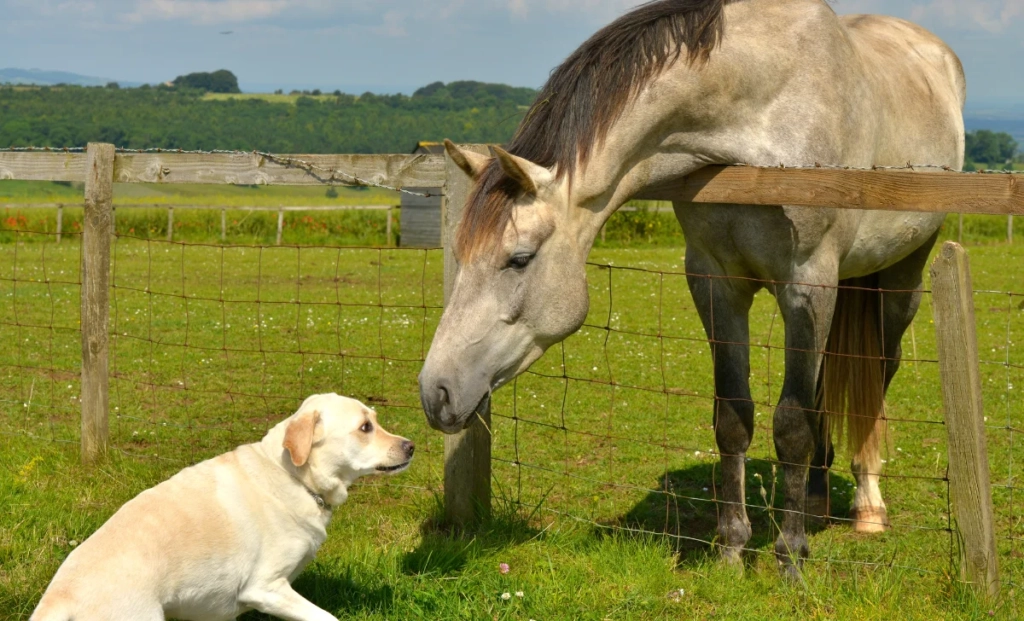
Day 8: Final Reflections and Wrapping Up
On my last day at Triple B Farms, I reflected on everything I had learned during my time with Shenee and her dogs. The experience had taught me so much about DIY dog shampoos, the importance of natural dog shampoo, and how to properly care for dogs with different skin and coat types.
Shenee was now well-equipped to take care of her dogs’ grooming needs, whether it was seasonal shedding, occasional skin irritation, or simply maintaining a healthy, shiny coat.
As I said my goodbyes, I was filled with gratitude for the time I spent in Texas. It wasn’t just a trip to catch up with an old friend; it was an eye-opening experience that deepened my understanding of dog care, and I knew I would carry these lessons back to my work in Ozark.
Quick Answers for Happy, Healthy Coats
1. How long should I leave shampoo on my dog?
Leave shampoo on for 3-5 minutes to let ingredients work effectively, especially with medicated or soothing shampoos, then rinse thoroughly.
2. Can frequent baths harm my dog’s skin?
Yes, too many baths can strip natural oils, causing dryness and irritation. Usually, bathing once a month is enough unless advised otherwise by a vet.
3. What’s the best water temperature for bathing dogs?
Use lukewarm water, not too hot or cold, to avoid skin irritation and keep your dog comfortable during the bath.
4. How can I prevent my dog’s coat from matting?
Regular brushing and grooming prevent mats, especially for long or curly coats. Using conditioner can also help keep fur soft and manageable.
5. Are natural shampoos safe for all dogs?
Most natural shampoos are safe, but always check ingredients and test on a small skin patch first, especially for dogs with allergies or sensitivities.
6. How do I know if my dog has a shampoo allergy?
Look for redness, itching, swelling, or rash after bathing. If symptoms appear, switch shampoos and consult your vet.
7. Can dog shampoo help with flea control?
Some dog shampoos contain flea-repellent ingredients, but they should be part of a comprehensive flea control plan including treatments and prevention.
8. Is it necessary to condition a dog’s coat after shampooing?
Conditioners help moisturise and detangle, especially for long-haired breeds. They aren’t always necessary, but can improve coat health and manageability.
9. Can I mix different dog shampoos during baths?
Mixing shampoos isn’t recommended, as ingredients might react poorly. Stick to one shampoo per bath for the best results and safety.



